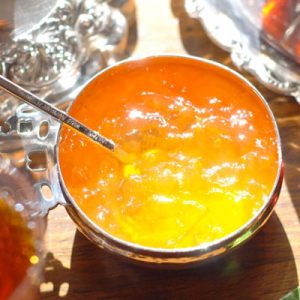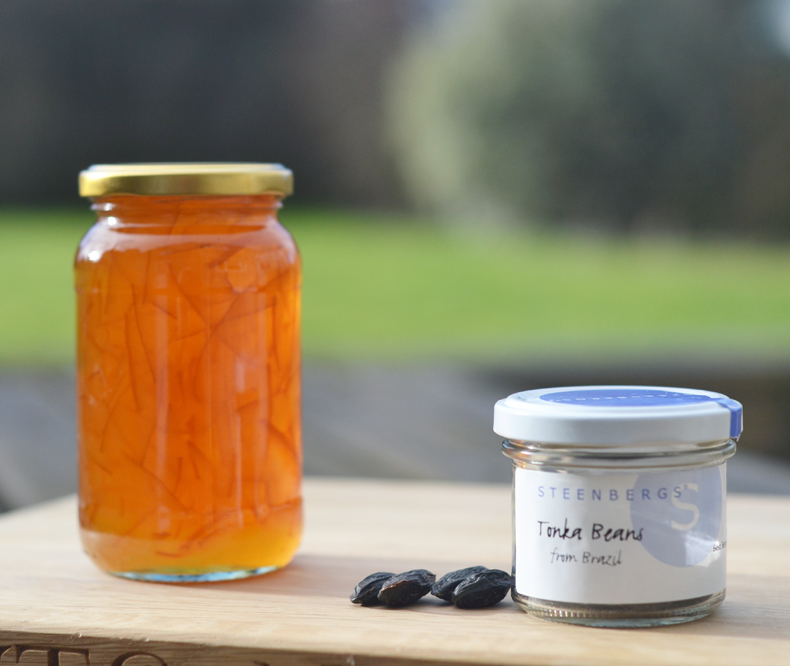Recipes for citrus marmalades have been recorded since the early seventeenth century, but the marmalade recipe we enjoy today  was developed by the Victorians. In the mid seventeenth century, bitter orange and lemon marmalades were made from the fruit pulp and stewed apple. The peel was sliced thinly into long strips. The consistency of this marmalade would have been similar to a fruit cheese and cut with a knife, rather than being spooned out of its container. Many recipes tended to be rule-of-thumb and gave unpredictable results. In 1681, Rebecca Price’s record of her mother’s Seville orange marmalade gave proportions of sugar to fruit, but omitted the volume of water to be used or the cooking time.
was developed by the Victorians. In the mid seventeenth century, bitter orange and lemon marmalades were made from the fruit pulp and stewed apple. The peel was sliced thinly into long strips. The consistency of this marmalade would have been similar to a fruit cheese and cut with a knife, rather than being spooned out of its container. Many recipes tended to be rule-of-thumb and gave unpredictable results. In 1681, Rebecca Price’s record of her mother’s Seville orange marmalade gave proportions of sugar to fruit, but omitted the volume of water to be used or the cooking time.
Research
During the 1920’s scientists at the agricultural research station at Long Ashton, Bristol, examined the shelf life of sweet preserves and created recipes with specified proportions of fruit, sugar, acid and pectin. These kept well for at least a year. Their recipes produced marmalades with tender peel, bright colours, gelled consistencies and true fruit flavours. The recipes had twice the weight of sugar to fruit.
A Marmalade recipe with equal quantities of fruit to sugar or two thirds sugar to fruit, frequently produce marmalades with different consistencies and disappointing flavours. Marmalade recipes I share on my website and publish in my books follow the principles established by those scientists. Making a good marmalade is similar to baking a cake, a balanced recipe is key to success.
Flavour variations
Adding different flavours, for example alcohol, spice, chocolate, and herbs offer variety to the cook and to the consumer. If you start with a reliable recipe, it’s easy to add a flavour that works with citrus. This year I’ve added new flavours to marmalade including vanilla, tonka beans, and amaretto.
During the last few years, there has been a trend by Artisans and food writers to change the definition of marmalade from pure citrus to citrus and other fruit. There seems to be no end to the different combinations I read in books and online, for example Seville and Pomegranate, Blood Orange and Raspberry, Orange and Cranberry. This trend flies in the face of The Jam and Similar Products ( England) Regulations 2003 which states Marmalade is ” in every case obtained from citrus fruit”.
The season for making marmalade from fresh citrus is a short one of a couple of months. Join me and celebrate the season of citrus as all too soon, rhubarb, gooseberries, raspberries, and strawberries will be ripening for us to make into jam, not marmalade.

